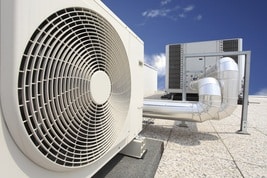Choosing the right air conditioning system
It’s important to select the right air conditioner for your home. Here are some tips to get you started.

It’s important to select the right air conditioner for your home. Chris from CRT-AIR explains the history, benefits and challenges of one of the most popular types of air conditioning systems – evaporative cooling.
There are many things to look for when choosing the best air conditioning for your home; these include:
- Frequency of use.
- How long would you like the air conditioning unit to last?
- What sort of operations are you after, e.g., automatic, programmable features, etc.?
The list goes on!
Without careful consideration of the different options and designs available, you might end up with a system with high ongoing costs that doesn’t suit your needs and/or comfort level.
There are many air conditioning options available, including ducted and reverse cycle. However, the most basic – and arguably cheapest and quietest – form or air conditioning is evaporative cooling.
History of evaporative air conditioning
The concept of evaporative air conditioning was initially adapted in the form of the earliest design of refrigeration – in fact, it dates back to rustic settlers and their outdoor meat hanger shelving system! The storage device was surrounded by an outer woven fabric, and the top was filled with water to keep the woven fabric damp. With the aid of wind passing over these damp outer covers, it provided a sufficiently chilled internal space by means of evaporation. Of course, this basic device never performed as well as the chilled atmosphere of today’s domestic refrigerators, but hung in the shade it kept meat for longer.
How does modern evaporative air conditioning work?
Evaporative cooling is made up of 3 main parts:
- Supply Air Fan – This fan forces a large amount of outside air inside via the ducting network.
- Water Pads – The pads produce the evaporation of the outside air as it travels over a damp surface.
- Water Pump – Provides constant wetness to the water pads.
The benefits
Because of its simplistic design, the major benefit of ducted evaporative air conditioning is cheap ongoing running costs. The supply air fan draws only a fraction of electricity compared to refrigeration. Additionally, due to the simplistic construction of evaporative coolers the purchase price is also a fraction of other air conditioning options.
Another positive is the constant intake of fresh air, which can be more refreshing and economical than units that use recycled air, like refrigeration systems.
Most important, however, is the way this type of air conditioning is suited to Australia’s warm weather conditions. On average, 40% of the year, outdoor weather conditions are only mildly warm, but they are typically sunny. Your house will quickly exceed the outdoor temperature conditions without any form of air conditioning due to solar exposure. Using an evaporative cooler to forcefully and constantly flush out the internal heat build-up in mild weather conditions is of great advantage.
The challenges
Water conservation has long been a topic of debate, so it’s only natural that homeowners might question an air conditioning system that is based on high water use. Dirty water, such as grey water recycling, bore water, or dam-sourced water, is incompatible with typical evaporative coolers because of contaminants building up inside the unit during use. This means that evaporative air conditioning generally doesn’t work in a rural setting. However, newer housing estates with contaminate and mineral-free recycled ‘purple tap’ water are quite a suitable eco-friendly option for connection to these evaporative cooling systems.
During cooling operation, evaporative coolers add a higher level of moisture to the air being delivered into your home, which is humidity. This has the ability to encourage mould and mildew growth. To limit the chance of this air must be given the chance to exit your home (via an exhaust vent or open window) at the flow rate your system constantly delivers.
In summary
Evaporative cooling systems are highly attractive and often, installations are based on cost alone – however, as discussed in this article, there are other things to consider. Before opting to invest thousands of dollars in installing an evaporative air conditioning unit, make sure you have done the necessary research and know what you’re in for – the pros and cons!
List your air conditioning installation job now.
About Author Chris Tremayne
Chris Tremayne runs CRT-AIR, a registered business on ServiceSeeking.com.au and a qualified air conditioning installer.
Have you purchased an evaporative cooling air conditioner recently? Are you happy with its performance?